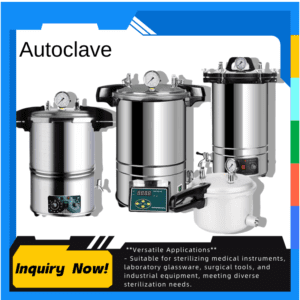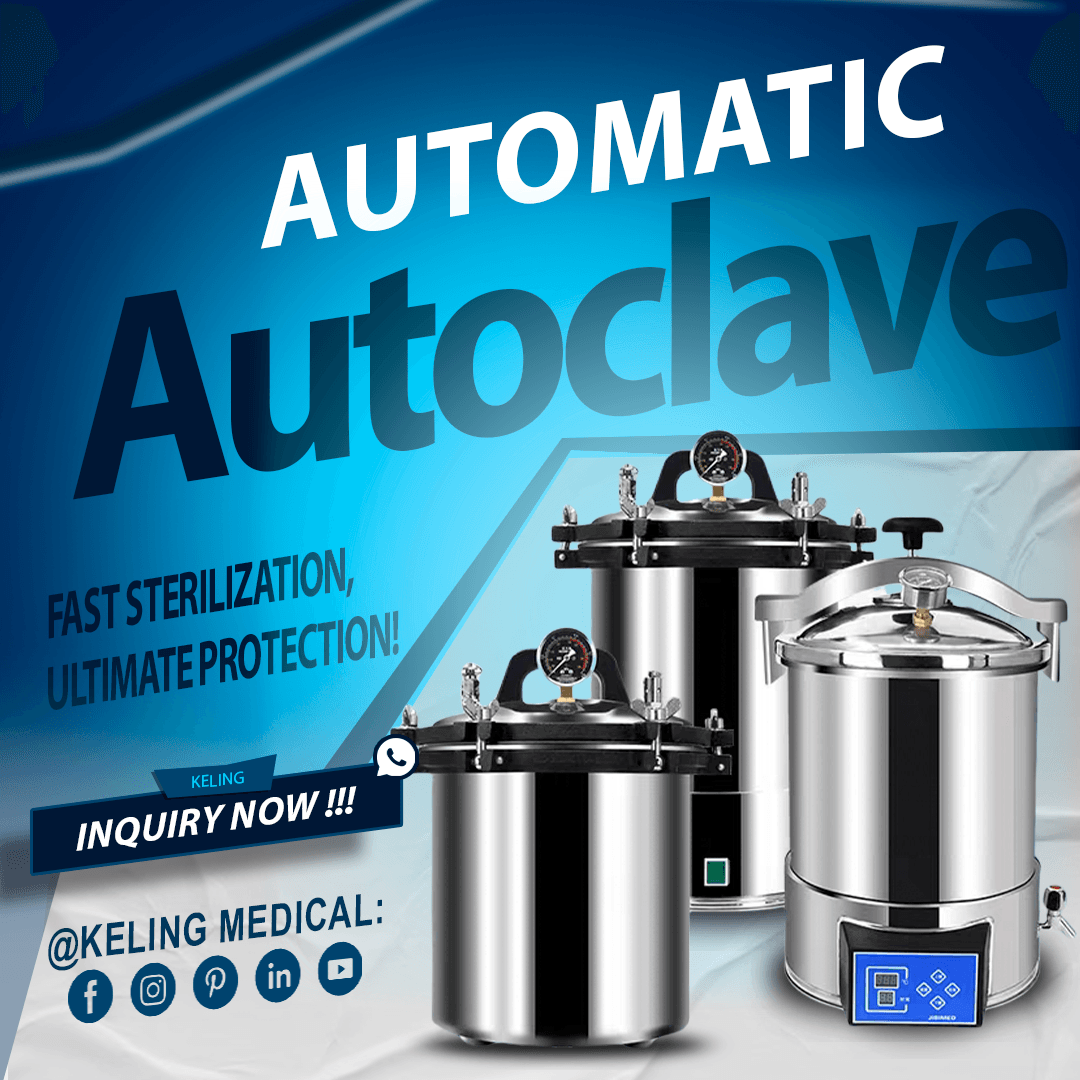
Autoclave machines used in hospitals are one of the most important investments in healthcare infrastructure, serving as the first line of defense against healthcare-associated infections. Sophisticated sterilization equipment is essential for maintaining the safety of surgical instruments, medical devices, and other reusable equipment. This comprehensive guide will cover autoclave machines in healthcare, specific uses for medical sterilization, regulatory requirements, and best practices for purchasing, implementing, and operating hospital autoclaves.
Healthcare-associated infections represent a significant risk to patient safety, with infection prevention being a top priority for hospitals and healthcare facilities. Autoclave machines are a key component of effective infection prevention programs. Validated sterilization of medical instruments and equipment using high-temperature steam is one of the most reliable methods for eliminating bacteria, viruses, fungi, and even the hardiest of bacterial spores.
The need for properly sterilized surgical instruments in the operating room has a direct impact on patient outcomes. Autoclaves in hospital central sterile supply departments or operating room support areas process thousands of instruments each day. Surgical scheduling, patient safety, and hospital operations as a whole depend on the dependability and efficiency of these sterilization systems.
Meeting strict regulations and standards for the sterilization process in healthcare settings is a must. Organizations such as the CDC, the FDA, and the WHO and international regulatory authorities establish guidelines for autoclave machines in healthcare settings. Equipment requirements, validation processes, record-keeping standards, and staff training requirements are among the topics covered by these regulations.
Large healthcare facilities typically have centralized sterilization departments that include high-capacity autoclave machines. High-performance autoclaves capable of processing hundreds of instrument sets per day, have the following features:
Multiple chamber sizes for different load configurations
Advanced control systems for precise management of cycle parameters
Automated loading features to improve efficiency and reduce manual handling
Electronic documentation and record-keeping for compliance and quality assurance
Compact autoclaves, also known as immediate-use steam sterilization (IUSS) units, are located near the OR for on-demand sterilization. These units are not designed for primary sterilization use and are only intended to be used to sterilize instruments that must be reprocessed during a procedure.
Numerous other hospital departments use smaller autoclave machines for their specific needs. Departments throughout the hospital have these units:
Emergency Departments for rapid reprocessing of trauma instruments
Outpatient Clinics for examination instruments
Laboratory Areas for sterilizing culture media and equipment
Dental Departments with units dedicated to dental instruments
Effective sterilization preparation measures include the following:
Decontamination (Initial Cleaning)
Inspection for damage, wear, or residual contamination
Assembly (Proper arrangement of instruments for steam penetration)
Packaging (Use appropriate wrapping materials and techniques)
Loading (Strategic placement within the autoclave chamber)
Standard parameters include:
Gravity Cycles: 121°C for 30 minutes or 132°C for 15 minutes
Pre-vacuum Cycles: 132°C for 4 minutes for wrapped instruments
Flash Sterilization: 132°C for 3-10 minutes for unwrapped items
Liquid Cycles: Extended cooling to prevent boil-over
Monitoring is typically performed in the following ways:
Physical Monitoring: Temperature, pressure, and time are recorded for each cycle.
Chemical Indicators: Color-changing indicators that verify exposure to sterilizing conditions.
Biological Indicators: Confirm the effectiveness of the sterilization process.
Routine Testing: Daily, weekly, and monthly validation procedures
Heat-sensitive elements, such as electronics, lubricants, or heat-treatable alloys, are found in many contemporary medical equipment. Careful evaluation of which items are autoclave-compatible and which require alternative sterilization methods is required, along with clear protocols for equipment compatibility.
Sterilization of implantable medical equipment necessitates the highest quality assurance standards. Extended cycles, more rigorous monitoring, and record-keeping standards are just a few of the ways implant devices are sterilized.
Hospitals frequently use specialized surgical equipment, instruments, and supplies on loan from manufacturers. Because loaner instruments are not always reprocessed in the same way as standard department-owned equipment, specialized handling and sometimes reprocessing before use are required. Autoclave machines must be able to accommodate a variety of instrument configurations and maintain flexibility for various load types.
Healthcare workers who operate autoclave machines need the following knowledge and skills:
Microbiology Basics: An understanding of what they are sterilizing.
Sterilization Principles: Understanding the mechanism of steam sterilization.
Equipment-Specific Training: Proficiency in the proper use of autoclave models.
Safety Protocols: Protecting oneself and others.
Quality Standards: Compliance with regulations and best practices.
Staff operating autoclave machines are required to get professional certification from the following organizations by many healthcare institutions:
International Association of Healthcare Central Service Materiel Management (IAHCSMM)
Certification Board for Sterile Processing and Distribution (CBSPD)
The sterile processing sector is continuously changing as new technologies, regulations, and best practices are developed. Training should be updated on a regular basis to keep up with developments.
Hospital autoclave machines operate in a demanding environment and are frequently required to run 24/7. Daily inspections, weekly cleaning, monthly calibration, and annual overhauls are all part of a comprehensive preventive maintenance program.
Staff must be ready for autoclave failure:
Backup Equipment: Redundant sterilization capacity is maintained.
Emergency Protocols: Procedures for dealing with equipment failure.
Service Agreements: Guaranteeing a speedy response for repairs.
Contingency Planning: Covering arrangements with other hospitals, if necessary.
Modern hospital autoclaves can be integrated with facility information systems to track instruments, keep records of cycle parameters, generate compliance reports and quality metrics, and ensure traceability of sterilized items to patient procedures.
Integration with information systems can also optimize operations:
Predictive Scheduling: Anticipating instrument requirements and streamlining workflow
Inventory Management: Tracking instrument availability for use
Quality Analytics: Identifying trends and opportunities for improvement
Cost Analysis: Gaining insight into sterilization expenses by procedure
Autoclave capabilities in hospitals are on the verge of making great leaps forward due to several upcoming technologies.
Artificial Intelligence and Machine Learning: Predictive maintenance and cycle optimization
Robotics: Automation of loading and unloading systems
Advanced Materials and Engineering: Increased efficiency of chamber design and insulation
Sustainable and Green Technologies: Lower water and energy consumption
Healthcare delivery is changing, and sterilization requirements are changing as a result:
Minimally Invasive Surgery: Increased complexity of instruments to be reprocessed
Personalized Medicine: Custom instruments and implants
Expansion of Outpatient Care: Sterilization needs are spread out.
Global Health Challenges: Portable and efficient sterilization methods
Autoclave machines used in hospitals are a critical investment in patient safety and quality care. Healthcare outcomes and hospital operations are significantly impacted by the proper selection, operation, and maintenance of autoclave machines. In the face of new medical technologies and changing regulatory requirements, it is up to healthcare institutions to remain committed to excellence in sterile processing.
Investing in medical sterilization’s complexities, appropriate equipment, and training is essential. A crucial part of healthcare organizations will be autoclave machines as long as rigorous quality standards are maintained. Even as medical sterilization technology advances in the future, the basic tenet of patient safety through appropriate sterilization remains the same.
Q1: How frequently do hospitals utilize biological indicators for their autoclaves?
A: Most hospital autoclaves should use biological indicators on a daily basis, with additional testing for each load of implantable items and weekly testing for each sterilization cycle type used.
Q2: How do disinfection and sterilization differ in healthcare settings?
A: Reducing the number of viable microorganisms to a safe level is the goal of disinfection. Sterilization, on the other hand, is the process of completely eradicating all forms of microbial life.
Q3: Are all medical tools and equipment sterilizable in an autoclave?
A: Heat-sensitive instruments, electronics, and some materials are unable to withstand autoclave temperatures. Alternative low-temperature sterilization methods are required for these things.
Q4: For how long are sterilized instruments sterile after being autoclaved?
A: Depending on how they’re packaged and stored, instruments may retain sterility for a long time. Sterility is maintained in accordance with the event-related maintenance of sterility principle, which assumes that sterility relies on storage circumstances rather than time.
Q5: What steps should a hospital take in the event of an autoclave cycle failure?
A: Failed cycles must be investigated, the load quarantined, the failure recorded, and the items reprocessed after the issue has been resolved. The autoclave procedures must be reviewed to prevent recurrence.

Introduction Autoclave machines used in hospitals are one of the most important investments in healthcare infrastructure, serving as the first line of defense against healthcare-associated infections. Sophisticated sterilization equipment is

The autoclaving process serves as an essential sterilization practice utilized across medical, laboratory, and research facilities to protect glassware and instruments through effective sterilization. High-pressure steam eliminates pathogens during this

The autoclaving process serves as an essential sterilization practice utilized across medical, laboratory, and research facilities to protect glassware and instruments through effective sterilization. High-pressure steam eliminates pathogens during this

The autoclaving process serves as an essential sterilization practice utilized across medical, laboratory, and research facilities to protect glassware and instruments through effective sterilization. High-pressure steam eliminates pathogens during this

The autoclaving process serves as an essential sterilization practice utilized across medical, laboratory, and research facilities to protect glassware and instruments through effective sterilization. High-pressure steam eliminates pathogens during this
The autoclaving process serves as an essential sterilization practice utilized across medical, laboratory, and research facilities to protect glassware and instruments through effective sterilization. High-pressure steam eliminates pathogens during this